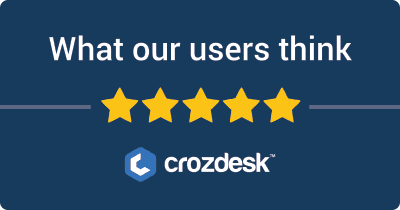
Microsoft Power BI and Heap Analytics are two prominent tools in the analytics landscape, each catering to distinct needs within data analysis and business intelligence. Power BI, a product of Microsoft, focuses primarily on data visualization and business intelligence reporting, empowering users to transform raw data into interactive dashboards and insightful reports. On the other hand, Heap Analytics specializes in capturing user interactions automatically, making it an invaluable tool for product and marketing teams aiming to understand user behavior without the need for manual event tracking.
Users gravitate toward Power BI for its robust integration with other Microsoft products and its powerful visualization capabilities, while Heap Analytics attracts those looking for seamless data collection and in-depth behavioral insights without extensive setup.
When comparing these tools, several key aspects emerge:
- Features: Power BI excels in customizable dashboards and extensive visualization options, while Heap offers automatic event tracking and easy access to user journey analytics.
- Pricing: Power BI has a tiered pricing structure that can cater to various business sizes, whereas Heap provides usage-based pricing that may suit startups and enterprises alike.
- Ease of Use: Power BI requires some familiarity with data modeling, while Heap is designed for users without technical expertise, promoting user friendliness and quick onboarding.
This comparison will provide clarity to users deciding between the two tools based on their specific analytics needs and business objectives.
Microsoft Power BI VS Heap Analytics: Which tool is the most popular?
| Tool | Number of Reviews | Average Rating | Positive Reviews | Neutral Reviews | Negative Reviews |
|---|---|---|---|---|---|
| Heap Analytics | 121 | 4.33 | 117 | 2 | 2 |
| Microsoft Power BI | 10 | 4.30 | 9 | 1 | 0 |
Heap Analytics is the most popular tool based on the number of reviews, with a total of 121 reviews and an average rating of 4.33. Microsoft Power BI, while having a slightly lower average rating of 4.30, has significantly fewer reviews at only 10, indicating lower overall user engagement.


Microsoft Power BI and Heap Analytics: Quick Comparison Overview
| Feature/Aspect | Ahrefs | SEMrush |
|---|---|---|
| Primary Features | – Site Explorer – Keyword Explorer – Backlink Checker – Content Explorer – Rank Tracker |
– Keyword Research – Site Audit – Position Tracking – Content Analyzer – Marketing Insights |
| Target Audience | – SEO professionals – Digital marketers – Agencies focusing on content marketing and backlink analysis |
– Digital marketers – SEO experts – Content marketers – Social media marketers and PPC specialists |
| Main Advantages | – Robust backlink analysis – Comprehensive keyword data – Intuitive user interface – Constantly updated index |
– All-in-one digital marketing tool – Extensive competitor analysis – Wide array of tools for SEO and PPC – Integrated social media management |
| Core Value Proposition | Focused on providing in-depth SEO insights, particularly strengths in backlink profiles and organic keyword rankings. Ideal for users prioritizing content strategy and link-building efforts. | Offers a holistic view of digital marketing, making it easier to manage all aspects of online presence through an extensive range of tools for SEO, PPC, and social media marketing. |
| Ideal Use Cases | – Conducting comprehensive link audits – Developing effective content strategies – Tracking backlinks and organic rankings – Keyword planning for SEO campaigns |
– Managing and optimizing PPC campaigns – Conducting competitive analysis for market positioning – Comprehensive content analytics and SEO tracking – Social media metrics and management |
Most liked vs most disliked features of Microsoft Power BI and Heap Analytics
| Aspect | Microsoft Power BI | Heap Analytics |
|---|---|---|
| Most Liked Features | – Ability to import data from various sources (Oracle, MySQL, Azure, Excel) and clean it effectively. | – "Plug and play" interface that is user-friendly for non-developers. |
| – Intuitive interface for creating customized dashboards. | – Automatic event capture for easy tracking of user interactions. | |
| – Strong data visualization capabilities (graphs, pie charts, tables). | – Visual representations of user journeys help identify drop-off points and conversion funnels. | |
| – Natural language querying for simplified data analysis. | – Responsive support team providing timely assistance. | |
| – Automated data processing and scheduled report refreshes. | – Integration capabilities with various platforms enhance analytics. | |
| Most Disliked Features | – Advanced features (DAX, Power Query) can be complex to learn. | – Visualization tools can be difficult to use for smaller objects in large datasets. |
| – Pricing and licensing concerns may affect small businesses and individuals. | – Limited ability to create data tables and customize reports, especially regarding session-level metrics. | |
| – Frustrations about the requirement for a stable internet connection for certain features. | – Some advanced features may confuse users due to a lack of intuitive design. | |
| – Performance lag can occur with large datasets. | – Certain user behaviors may not be captured, notably on non-mainstream platforms. | |
| – Restrictions in customizing elements compared to competitors. | – Lack of an alert system for monitoring performance issues or drops in user behavior. |
Key Features of Microsoft Power BI vs Heap Analytics
Key Features of Microsoft Power BI and Heap Analytics
Microsoft Power BI
-
Data Visualization:
- Benefit: Users can create visually appealing and interactive reports and dashboards, making data easier to understand and interpret.
- Unique Aspect: Power BI offers a range of custom visualizations, enabling users to use third-party visuals from the marketplace to meet specific needs.
-
Data Connectivity:
- Benefit: Power BI connects to various data sources, including files, databases, and cloud services, which allows users to consolidate data for comprehensive analysis.
- Unique Aspect: It supports a wide array of connectors, including Azure, SQL Server, and many others, making it versatile for different data ecosystems.
-
Natural Language Querying (Q&A):
- Benefit: Users can ask questions in plain English and receive visualizations, streamlining the information retrieval process.
- Unique Aspect: This feature enhances accessibility, allowing non-technical users to engage with data without needing to learn complex query languages.
-
Collaboration and Sharing:
- Benefit: Teams can share dashboards and reports easily, facilitating collaborative decision-making based on common data insights.
- Unique Aspect: Integration with Microsoft Teams allows for streamlined communication and collaboration directly within the platform.
-
Real-time Data Monitoring:
- Benefit: Users can monitor data in real time to make timely decisions based on the most current information.
- Unique Aspect: Dynamic dashboards can be refreshed in real time, providing live insights for businesses that require immediate data visibility.
-
Advanced Analytics and AI Features:
- Benefit: Users can apply AI and machine learning models to their data, allowing for predictive analytics and deeper insights.
- Unique Aspect: Power BI includes built-in AI capabilities, enabling users to utilize automated insights and even create their own machine learning models within the tool.
Heap Analytics
-
Automatic Data Capture:
- Benefit: Heap automatically captures every user interaction (clicks, taps, form submissions) without needing manual event tracking.
- Unique Aspect: This feature allows companies to dive into granular user insights without extensive setup.
-
User Journey Mapping:
- Benefit: Users can analyze the complete user journey, allowing businesses to understand how users engage across different touchpoints.
- Unique Aspect: Heap presents this data in an intuitive layout that highlights drop-off points and conversion paths, which is key for optimizing user experience.
-
Cohort Analysis:
- Benefit: Heap allows for segmenting users based on behaviors, helping businesses understand trends and patterns in user engagement over time.
- Unique Aspect: It empowers businesses to create custom cohorts based on past behaviors, enabling targeted marketing and product enhancements.
-
Retroactive Analysis:
- Benefit: Users can analyze data and create reports retroactively without having to predefine events, making it flexible for evolving analytics needs.
- Unique Aspect: Unlike traditional analytics tools, which require pre-planned tracking, Heap allows teams to evaluate data even after significant interactions have occurred.
-
Integrations and APIs:
- Benefit: Users can integrate Heap with other tools and platforms to enhance reporting and analytics capabilities.
- Unique Aspect: Its open API design enables seamless connections with various marketing, product, and customer experience tools, supporting a flexible data ecosystem.
-
Behavioral Analysis:
- Benefit: Users can delve into behavioral patterns of visitors rather than simply looking at aggregate data, providing deeper insights.
- Unique Aspect: This feature allows Heap to differentiate itself by focusing on individual user behavior instead of traditional aggregate statistics.
Summary
Both Microsoft Power BI and Heap Analytics offer robust features tailored to analytics needs but differ in their approaches and unique aspects. Power BI excels in data visualization, real-time monitoring, and collaboration, making it suitable for organizations looking to create polished reports and share insights across teams. Heap Analytics, on the other hand, focuses on granular user-level data and automatic event tracking, which is ideal for businesses needing deep insights into user behavior without extensive initial configuration. Each tool can cater to different analytical requirements depending on the business context.
Microsoft Power BI vs Heap Analytics Pricing Comparison
| Feature/Plan | Microsoft Power BI | Heap Analytics |
|---|---|---|
| Free Tier | Free version available with limited features. | Free plan available with limited features. |
| Allows users to create dashboards and reports. | Basic funnel analysis and limited data retention. | |
| Pro Tier | $9.99 per user/month (billed annually). | $360 per month (billed annually) for up to 5 users. |
| Advanced analytics, sharing capabilities. | Access to visualization and advanced analytics. | |
| Includes data modeling and collaboration features. | Enhanced retention for collected data. | |
| Premium Tier | $20 per user/month (billed annually) or $4,995 | Enterprise plan; Custom pricing based on needs. |
| per dedicated cloud capacity for large organizations. | Enhanced support and full data infrastructure. | |
| Includes advanced AI capabilities and increased data | Custom integrations and advanced analytics features. | |
| storage. | ||
| Additional Discounts | No formal free trial, but free tier available. | Free trial for 14 days of the Growth or Business plan. |
| Volume discounts may apply for larger teams. | Custom pricing based on enterprise needs. | |
| Nonprofit discounts may be available. |
Key Differences:
- Pricing Structure: Power BI is priced per user, while Heap Analytics charges based on user count within the chosen tier.
- Free Plan Features: Both offer free tiers, but the scope of features and limitations differ significantly.
- Analytics Capabilities: Power BI offers extensive data modeling and AI features, while Heap focuses on user behavior analytics and runs funnel analyses.
- Enterprise Solutions: Power BI Premium is designed for larger organizations needing dedicated resources, while Heap offers custom pricing for enterprise usage without a defined tier.
- Trial Periods: Heap provides a 14-day free trial for its paid plans, while Power BI does not have a trial for its Pro version, relying instead on the free tier to attract users.
Support Options Comparison: Microsoft Power BI vs Heap Analytics
| Support Option | Microsoft Power BI | Heap Analytics |
|---|---|---|
| Live Chat | Not available. Support primarily through forums and documentation. | Live chat support available during business hours. |
| Phone Support | No direct phone support; users are directed to online resources. | Phone support available during business hours. |
| Documentation | Extensive documentation available, covering various aspects of usage and troubleshooting. | Comprehensive documentation available, including FAQs and guides. |
| Webinars | Regular webinars and training sessions offered on various topics. | Webinars provided to help users understand product features and best practices. |
| Tutorials | Tutorials available through Microsoft Learn and the Power BI Community. | Tutorials available on the Help Center, focusing on product functionality and use cases. |
| Community Forums | Active community forum for peer support and knowledge sharing. | Community forum for user interaction and support. |
| Customer Support Hours | 24/7 support available through online channels. | Limited support hours during business days. |
Unique Features of Microsoft Power BI Vs Heap Analytics
| Feature | Microsoft Power BI | Heap Analytics | Added Value and Implications |
|---|---|---|---|
| Natural Language Querying | Users can ask questions in natural language about their data, and Power BI will interpret and display the relevant visualizations. | Not specifically mentioned in Heap. | This feature democratizes data access, allowing users without technical skills to generate insights easily. It leads to faster decision-making as stakeholders can interact with data directly. |
| Integration with Microsoft Ecosystem | Seamless integration with other Microsoft products (Excel, Azure, SQL Server). | Works with popular analytics and CRM software but lacks the extensive Microsoft suite integration. | Leverages existing Microsoft investments, allowing organizations to work within familiar environments. This can enhance productivity and reduce the learning curve. |
| Real-time Dashboarding | Provides real-time dashboard updates from various data sources. | Data tracking is often retrospective unless configured to capture user interactions dynamically. | Real-time data can dramatically improve responsiveness to business changes and operational efficiency. It enables proactive decision-making rather than reactive analysis. |
| Custom Visualizations | Users can create unique visualizations tailored to their specific data and needs. | Offers a set of default visualizations; customization options are not highlighted. | Tailored visualizations lead to better storytelling with data, enhancing interpretability and deeper engagement with stakeholders. |
| Power Query Editor | Advanced data preparation tool that allows users to transform and clean data before analysis. | Data collection happens automatically, but preparation tools are more limited. | More granular control over data quality and structure can lead to better analysis outcomes and insights derived from cleaner data. |
| Paginated Reports | Users can create highly formatted, pixel-perfect reports suitable for printing and sharing. | No similar feature focused on paginated, precisely formatted reports. | This is critical for organizations that require professional-quality printed reports for board meetings or external stakeholders. |
| AI-Driven Insights | Built-in AI capabilities that suggest insights and visualize data trends automatically. | While Heap captures user interaction data, it lacks explicit AI-driven suggestions. | AI-driven capabilities help identify trends and anomalies that users might overlook, providing a competitive edge in strategic decision-making. |
| Data Modeling Capabilities | Strong data modeling features that allow complex calculations and relationships between data tables. | Primarily focuses on event tracking without deep data modeling features. | Enhanced data modeling leads to more sophisticated analysis and the ability to derive comprehensive insights from big data environments. |
| Customizable Alerts | Users can set alerts based on data conditions and trends. | Alerts not emphasized, primarily focused on user interaction data and events. | Alerts can enable timely interventions and actions, ensuring that businesses remain agile and responsive to changing metrics. |


